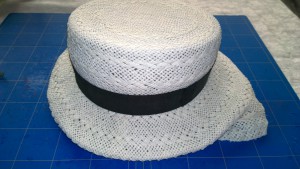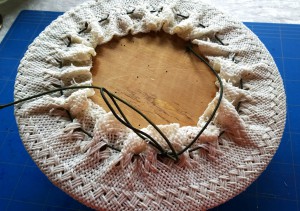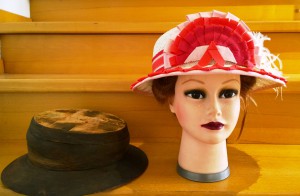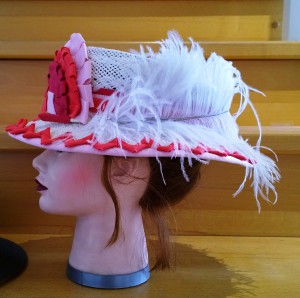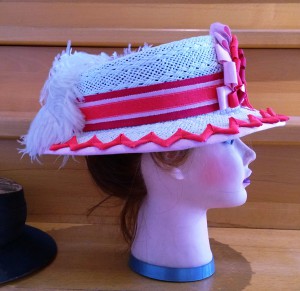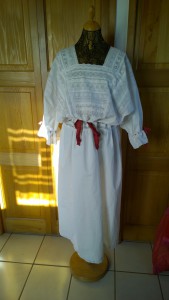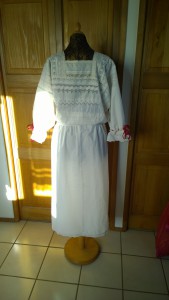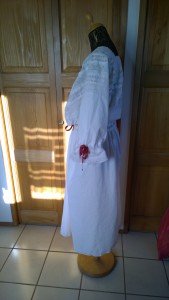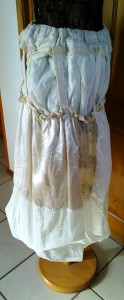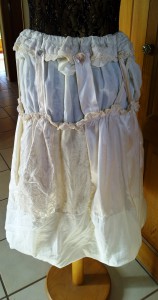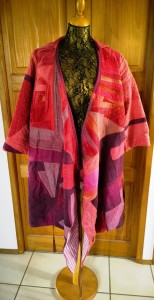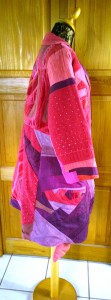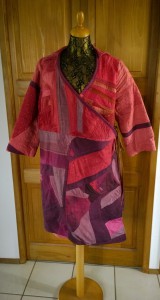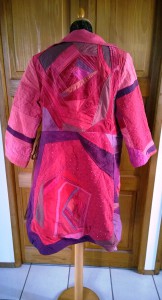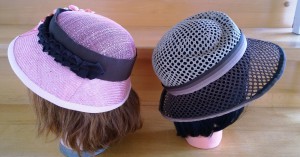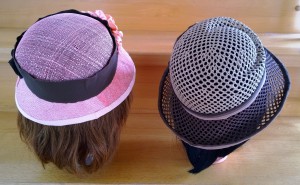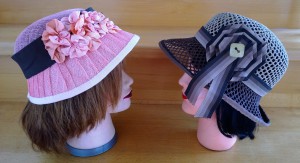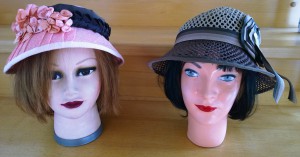Hat blocks were made over centurys in Europe. Most of them from wood, but alternative materials like wire, stiffed fabric, paper maché, plaster or different kinds of mass were also used.
Industrial production of hat blocks came with the 19th century. But the handmade, unique blocks, build by wood-carvers or women still existed. And they looked often very different to the industrial ones.
Industrial blocks have holes on the underside, to put them on a stand for work, but some of the unique hand-made blocks have none. And it was (and still IS) common, to use laminated wood for a hat block. Usually hardwood was used, but there are some examples of different kinds of woods, especially on unique hand made blocks.
Huge and heavy hat blocks, that would have tipped a stand over, got supporters of wood underneath or were plain.
And it was not always necesssary to use needles and pins. Until the early 20th century, the hat crown was fixed on the pass to the brim with belt-like stripes of leather or strings. Felt- or straw bodies were just folded under the underside of that huge and heavy hat blocks. And also grooves, very common today, existed then. Little cushions, filled with sand or rice, held the hat body down on cavitys.
Some of this methods are still commonly today!
OK, Lady….But WHAT is the meaning of this lecture?
Wait and see! Here comes the story of the “rage-hat”:
Some years ago, by asccident, I found a vintage hat block from around 1910-18 with one of those outsized hat-crowns, that were fashionable at the time. I dreamed of making period hats for theaters or reenactment, but it never turned out this way. So I sold the hat block with a heavy heart for a good price.
Problem solved and everything´s coming up roses?
No! The opposite! Soon after, I received a rather “frosty”email from the buyer.
She told me, I had sold her a useless “decoration item” instead of a genuine hat block and wanted her money back.
Her reasons were: The hat block has no holes on the underside and can not be used on a stand, it is laminated from different pieces of wood and those “shelfes” are not suitable to push pins in.
That´s right. But the heavy hat block was never meant to be worked on a stand. It´s weight is 3 kg! And it´s not necessary to work with pins on it. The use of laminated “shelfes” is also not uncommon. And why on earth, should anyone with a sense make a huge block in shape of a Titanic-Era hat and use it as a decoration item at home?
I must confess, it made me angry. A good milliner should have the skills to work even on uncommon hat blocks and not only on convenient modern or industrial pieces! It´s ok, to “dump” some technics or blocks, if you don´t go along with it, or you found a better way. but it´s important, to test it and have the experience!
I payed the money back and the hat block came back home again. I think, I keep it!
But there are things, I won´t have! And one of them is, if someone accuses me, I had sold her decoration-rubbish, useless for millinery.
So I sat down and MADE a hat with this block! Without using pins! (I should have done that years before!)
And here it is, the hat, that can´t exist, according to this Lady….Rather nice for a hat, made on a “decoration item”, isn´t it ?